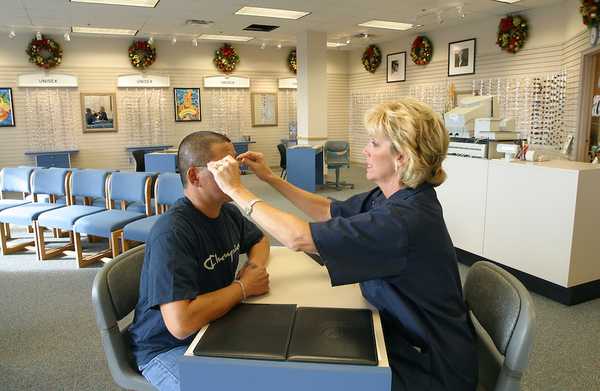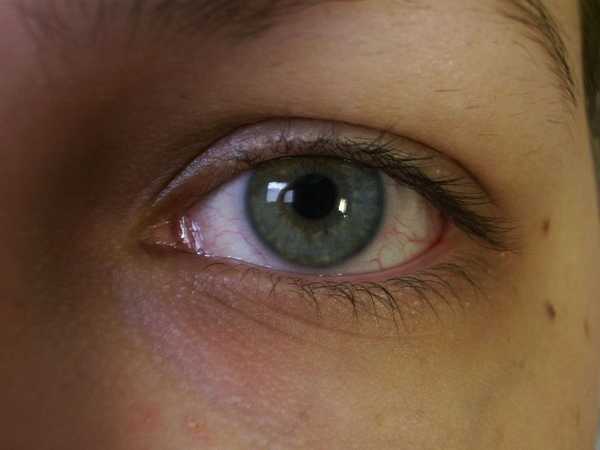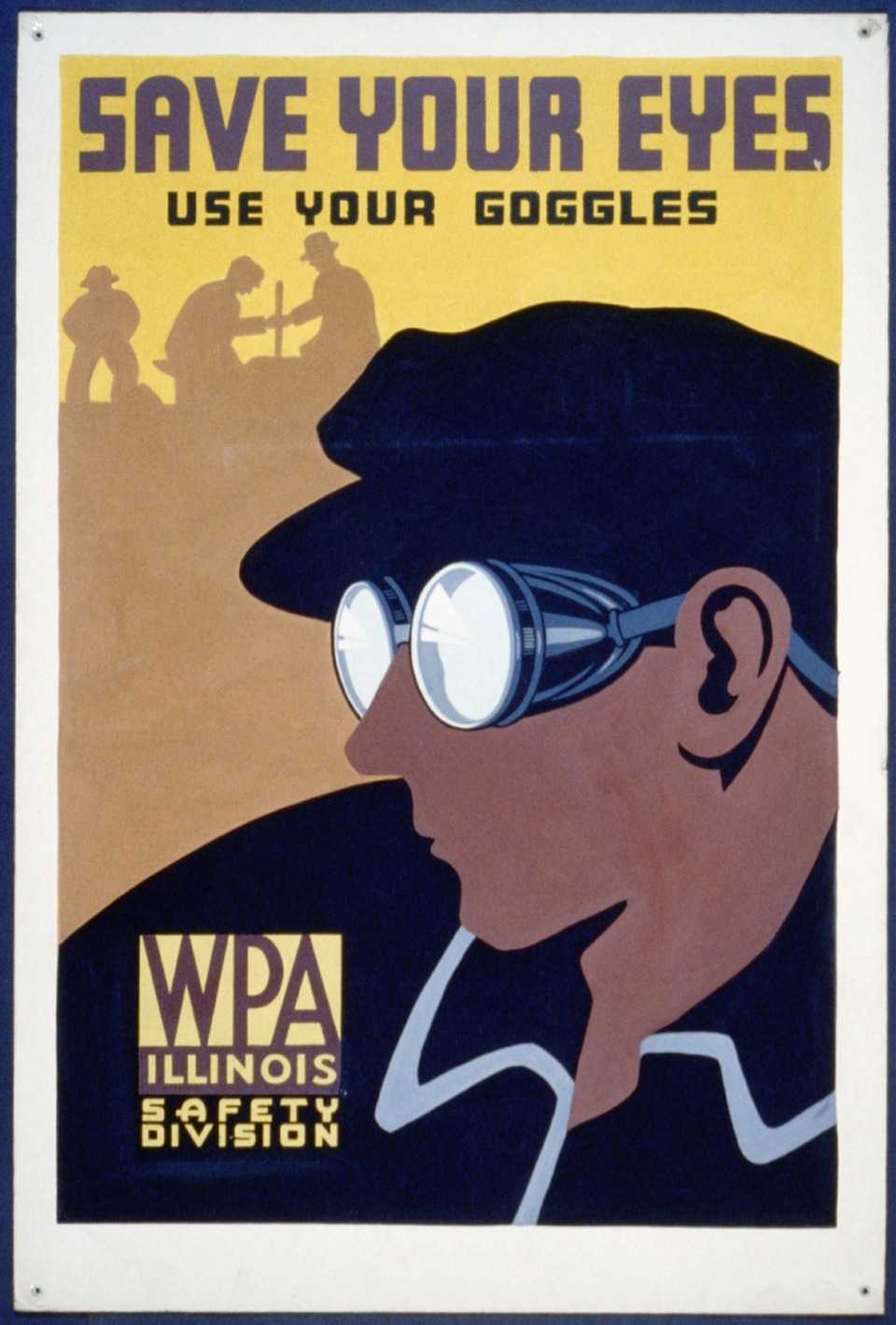Best Practices For Prevention Of Eye Injury
A wise person once said that an ounce of prevention is worth a pound of cure - Ben Franklin, 1736. And not much has changed centuries later. Protecting the eyes in the first place is much better than trying to deal with any injuries or damage. How do we protect them? Safety goggles!
Flying debris poses a risk to the eyes. Our eyes actually do have some built in protection against debris - it’s called eyelids. By reflex, we blink whenever we detect something is coming close to our eyes. It’s our safety mechanism to hopefully allow whatever debris approaching us to hit harmlessly off our eyelids instead of damaging the sensitive eye structures underneath.
But eyelids aren’t 100% effective. Sometimes we don’t see the debris approaching us because it’s too small or too fast. Sometimes eyelids just aren’t strong enough to repel the object. Sometimes we are dealing with chemicals which can seep underneath the eyelid. This is where safety goggles become important.
I’m not advocating that you need to wear safety goggles 24/7. That’s impractical. But there are some activities during which safety goggles shouldn’t be overlooked.
- Grinding metal is an obvious example; Always necessary to use safety goggles with that.
- But frequently doing things around the house can benefit from safety goggles.
- Mowing the lawn and using a string trimmer have a high projectile probability.
- Cleaning the house with chemicals has a high splash probability. Better keep those eyes protected!
- And one major activity that comes up a few times a year: Fireworks
Shooting off fireworks
This may not surprise you, but fireworks can cause damage to the eyes! Here is why,
Fireworks are essentially packs of gunpowder. This gunpowder launches projectiles in the air and explodes in a colorful fashion. Cool to see from a distance; get too close and fireworks are a leading cause of eye injuries.

Although they look cool, fireworks are dangerous to the eyes; Image by Eric Kilby from Somerville, MA, USA, CC BY-SA 2.0, via Wikimedia Commons
Bottle rockets launch with a lot of force. Just the projectile of the bottle rocket hitting the eye can cause a significant amount of damage. When launching fireworks, if you encounter a firework that doesn’t launch after being ignited, do NOT stand over and look at the firework. It also goes without saying that playing with fireworks and pointing them at people or shooting fireworks off while in a crowd should also be avoided.
Fireworks also cause damage from the chemicals that get released after the firework explodes. If the firework explodes too close to the eye, these chemical can absorb into the structures of the eye and can cause permanent damage! If you suspect chemicals have gotten in the eye, it is important to rinse the eye profusely with water until seen by a medical personnel.
In short, fireworks are fun to watch and experience. But fireworks are not toys and should be treated like the explosive projectiles that they are. Practicing safety will make your eyes happy!
Full Time Glasses Protect Only One Good Eye
Many options exist to correct vision. Glasses, contact lenses, and refractive surgery all are excellent choices. However, for some, glasses really are the only good option to correct vision. This includes patients that only have one good eye with good vision.

Glasses Can Protect The Eyes Full Time; Image by U.S. Navy photo by Photographer's Mate 1st Class William R. Goodwin., Public domain, via Wikimedia Commons
There are many reasons why someone may only have one good eye. A previous injury or weaker development of the eye from amblyopia may cause the vision to not be great. Either way, one eye has normal vision while the other is impaired.
When the patient only has one good eye, it is imperative to keep this good eye safe. Correcting vision with contact lenses or laser eye surgery is safe but unfortunately not 100%. While the risks of issues such as a contact lens infection are low, they aren’t zero. Developing an infection in your one good eye can be especially devastating. Glasses are the only way to completely avoid these risks.
But not only that, glasses provide additional protection to the eyes. Using glasses with shatter-proof polycarbonate lenses are recommended to protect the eyes from any potential projectile objects to the eyes. For this reason glasses really are the best option when you only have good vision in one of your eyes. And while sometimes glasses may be inconvenient, it is much more important to preserve the good vision that you have.
Injuries That Can Be Prevented
The cornea is one of the most sensitive structures in the body. It’s sensitive by design; you want to be alerted if something is touching or scratching it. Similar to how the skin can get scratched, the same thing can happen to the cornea. This is just one example of an injury that can be prevented with safety goggles.
A scratch on the cornea (cornea abrasion) can be exquisitely uncomfortable and painful. Normally the sensitive cornea is covered by the protective surface layer of the epithelium. In an abrasion, this protective layer gets scraped off. This leaves the sensitive cornea exposed to the outside world. That in itself is uncomfortable, but what really is the worst is that every blink causes the eyelids to painfully rub up against the sensitive cornea.

Iritated Eye; Image by SpooSpa on Flickr / <a href=“https://creativecommons.org/licenses/by-sa/2.0/">CC BY-SA
In addition to pain during a cornea abrasion, the vision is often blurry. When the epithelium coats the cornea, it forms a nice smooth surface to bend light into focus. When this layer is gone, the surface becomes quite irregular. This irregularity causes light to bend in every which what direction. Light no longer reaches the retina in sharp clear focus.
Fortunately, cornea abrasions heal up pretty quickly. Small ones can disappear within a day. Larger ones can take a few days up to a week to start feeling better. After the pain disappears, the vision slowly returns back to normal until everything is right back at normal again.
Summary
But beyond corneal abrasions, much worse things can happen that can cause loss of vision or even loss of the eye itself.
So head out to your local hardware store or favorite online retailer and pick up a nice pair of safety goggles. Who knows, wearing them may just save your eyes.
Related Articles
Also check out EyeMountain.com for more great eye articles
Please note: The general information provided on the Website is for informational purposes only and is not professional medical advice, diagnosis, treatment, or care, nor is it intended to be a substitute therefore. See the Disclaimer and Terms of Use for more information
